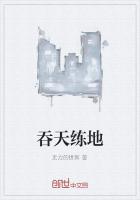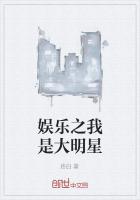Mr. Field then directed his efforts to the completion of the trans-oceanic section. He induced the American Government to despatch Lieutenant Berryman, in the Arctic, and the British Admiralty to send Lieutenant: Dayman, in the Cyclops, to make a special survey along the proposed route of the cable. These soundings revealed the existence of a submarine hill dividing the 'telegraph plateau' from the shoal water on the coast of Ireland, but its slope was gradual and easy.
Till now the enterprise had been purely American, and the funds provided by American capitalists, with the exception of a few shares held by Mr.
J. W. Brett. But seeing that the cable was to land on British soil, it was fitting that the work should be international, and that the British people should be asked to contribute towards the manufacture and submersion of the cable. Mr. Field therefore proceeded to London, and with the assistance of Mr. Brett the Atlantic Telegraph Company was floated. Mr. Field himself supplied a quarter of the needed capital;and we may add that Lady Byron, and Mr. Thackeray, the novelist, were among the shareholders.
The design of the cable was a subject of experiment by Professor Morse and others. It was known that the conductor should be of copper, possessing a high conductivity for the electric current, and that its insulating jacket of gutta-percha should offer a great resistance to the leakage of the current. Moreover, experience had shown that the protecting sheath or armour of the core should be light and flexible as well as strong, in order to resist external violence and allow it to be lifted for repair. There was another consideration, however, which at this time was rather a puzzle. As early as 1823 Mr. (afterwards Sir)Francis Ronalds had observed that electric signals were retarded in passing through an insulated wire or core laid under ground, and the same effect was noticeable on cores immersed in water, and particularly on the lengthy cable between England and the Hague. Faraday showed that it was caused by induction between the electricity in the wire and the earth or water surrounding it. A core, in fact, is an attenuated Leyden jar; the wire of the core, its insulating jacket, and the soil or water around it stand respectively for the inner tinfoil, the glass, and the outer tinfoil of the jar. When the wire is charged from a battery, the electricity induces an opposite charge in the water as it travels along, and as the two charges attract each other, the exciting charge is restrained. The speed of a signal through the conductor of a submarine cable is thus diminished by a drag of its own making. The nature of the phenomenon was clear, but the laws which governed it were still a mystery. It became a serious question whether, on a long cable such as that required for the Atlantic, the signals might not be so sluggish that the work would hardly pay. Faraday had said to Mr. Field that a signal would take 'about a second,' and the American was satisfied; but Professor Thomson enunciated the law of retardation, and cleared up the whole matter. He showed that the velocity of a signal through a given core was inversely proportional to the square of the length of the core.
That is to say, in any particular cable the speed of a signal is diminished to one-fourth if the length is doubled, to one-ninth if it is trebled, to one-sixteenth if it is quadrupled, and so on. It was now possible to calculate the time taken by a signal in traversing the proposed Atlantic line to a minute fraction of a second, and to design the proper core for a cable of any given length.
The accuracy of Thomson's law was disputed in 1856 by Dr. Edward O.
Wildman Whitehouse, the electrician of the Atlantic Telegraph Company, who had misinterpreted the results of his own experiments. Thomson disposed of his contention in a letter to the ATHENAEUM, and the directors of the company saw that he was a man to enlist in their adventure. It is not enough to say the young Glasgow professor threw himself heart and soul into their work. He descended in their midst like the very genius of electricity, and helped them out of all their difficulties. In 1857 he published in the ENGINEER the whole theory of the mechanical forces involved in the laying of a submarine cable, and showed that when the line is running out of the ship at a constant speed in a uniform depth of water, it sinks in a slant or straight incline from the point where it enters the water to that where it touches the bottom.
To these gifts of theory, electrical and mechanical, Thomson added a practical boon in the shape of the reflecting galvanometer, or mirror instrument. This measurer of the current was infinitely more sensitive than any which preceded it, and enables the electrician to detect the slightest flaw in the core of a cable during its manufacture and submersion. Moreover, it proved the best apparatus for receiving the messages through a long cable. The Morse and other instruments, however suitable for land lines and short cables, were all but useless on the Atlantic line, owing to the retardation of the signals; but the mirror instrument sprang out of Thomson's study of this phenomenon, and was designed to match it. Hence this instrument, through being the fittest for the purpose, drove the others from the field, and allowed the first Atlantic cables to be worked on a profitable basis.
The cable consisted of a strand of seven copper wires, one weighing 107pounds a nautical mile or knot, covered with three coats of gutta-percha, weighing 261 pounds a knot, and wound with tarred hemp, over which a sheath of eighteen strands, each of seven iron wires, was laid in a close spiral. It weighed nearly a ton to the mile, was flexible as a rope, and able to withstand a pull of several tons. It was made conjointly by Messrs. Glass, Elliot & Co., of Greenwich, and Messrs. R.
S. Newall & Co., of Liverpool.














